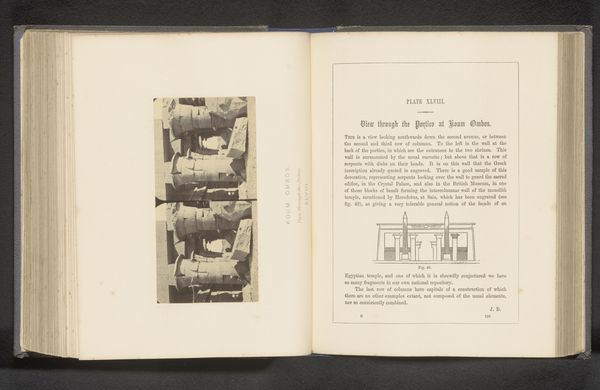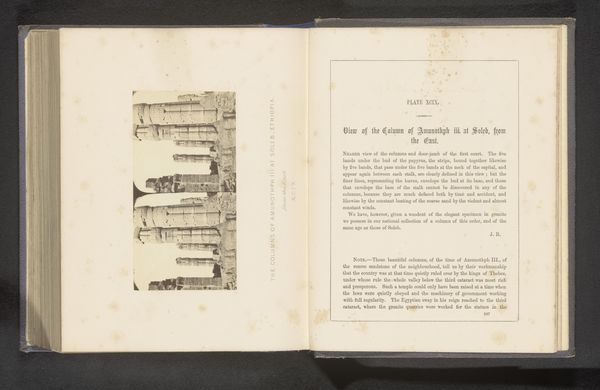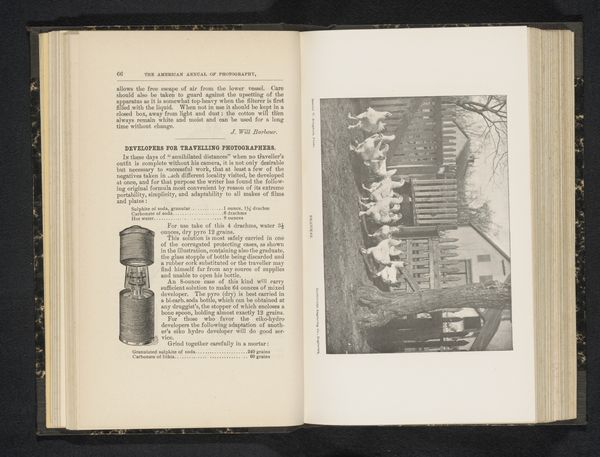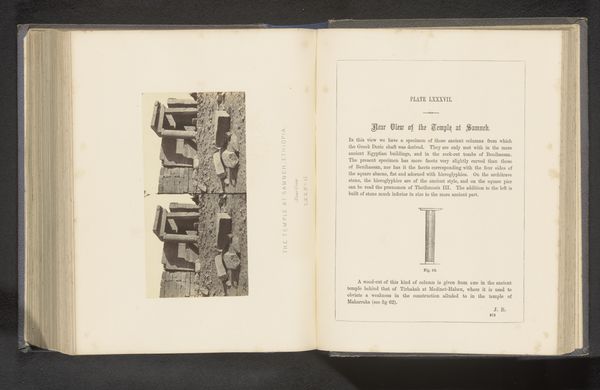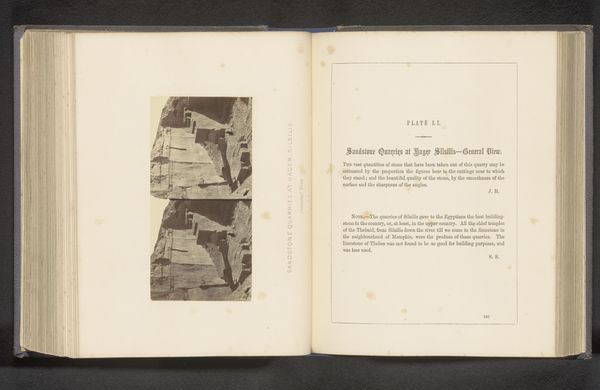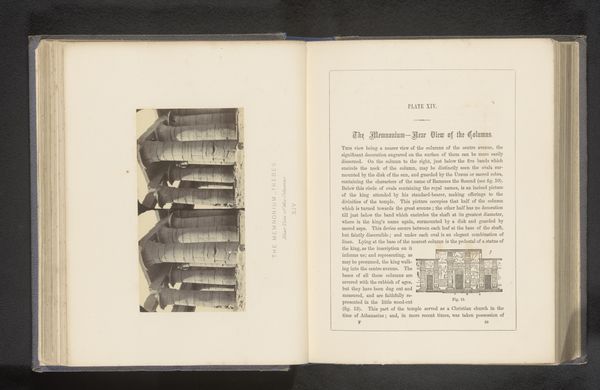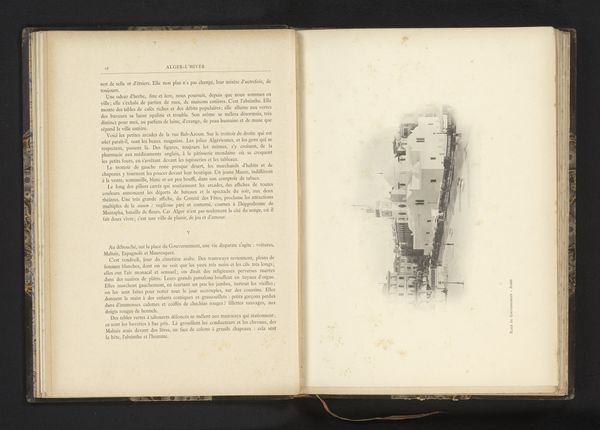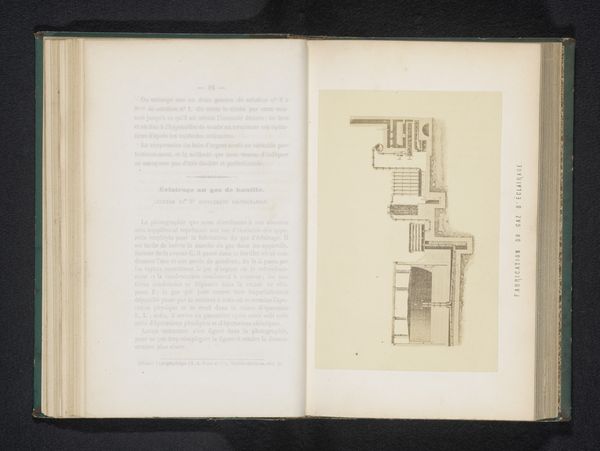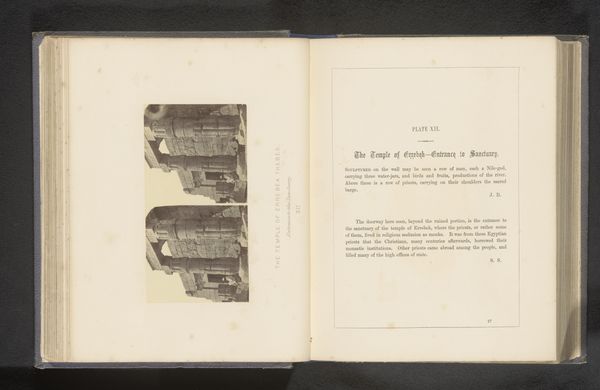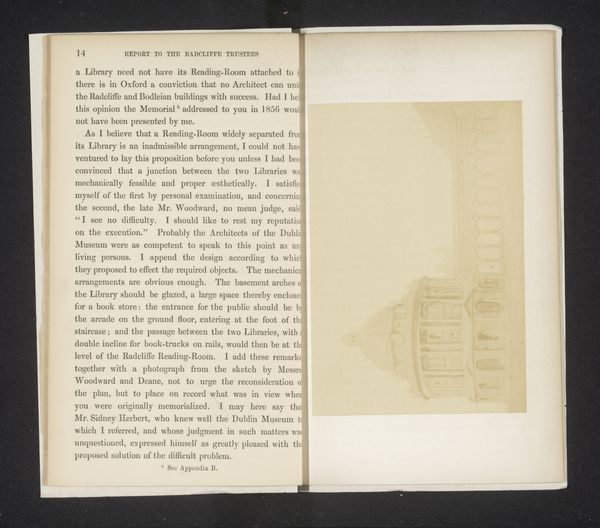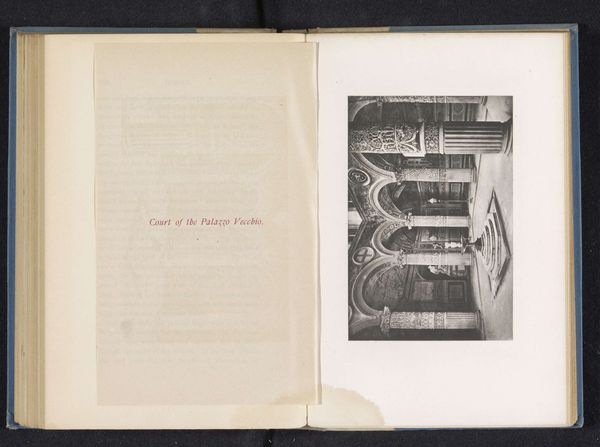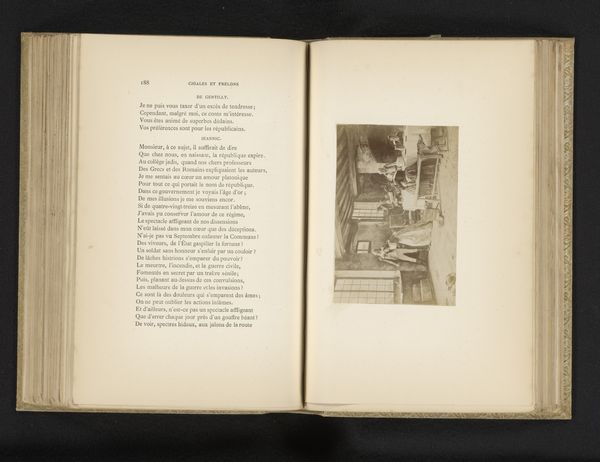
print, photography, gelatin-silver-print, architecture
#
aged paper
#
homemade paper
# print
#
sketch book
#
hand drawn type
#
landscape
#
ancient-egyptian-art
#
photography
#
personal sketchbook
#
hand-drawn typeface
#
fading type
#
ancient-mediterranean
#
gelatin-silver-print
#
thick font
#
architecture
#
historical font
#
columned text
Dimensions: height 70 mm, width 145 mm
Copyright: Rijks Museum: Open Domain
This is a photograph of the Ramesseum at Thebes, made by Francis Frith in the mid-19th century. It's found within the pages of a book, paired with a diagram of the same site. Frith was among the first to commercially distribute photographs on a large scale. During the Victorian era, ancient sites like the Ramesseum were potent symbols of imperial ambition. Photography played a crucial role in shaping public perception of foreign lands, often reinforcing colonial power dynamics by presenting these places as exotic and ripe for Western intervention. The institutional history of photography itself is relevant here. Photography was viewed as a scientific tool. Frith and his contemporaries carefully staged their photographs to convey a sense of objective truth, even as they actively shaped narratives about these sites. Understanding this image requires considering the photographer's intentions, the cultural context of Victorian England, and the broader history of colonialism. Accessing archives, travelogues, and historical accounts can shed light on the complex interplay between art, power, and representation. The meaning of art always depends on the society that produces it.
Comments
No comments
Be the first to comment and join the conversation on the ultimate creative platform.


